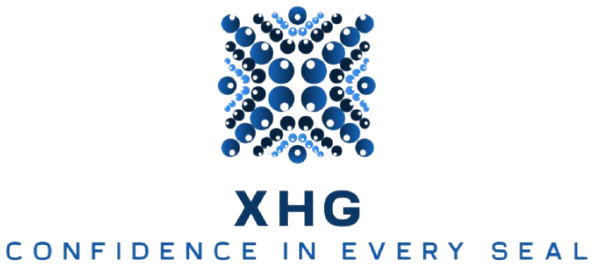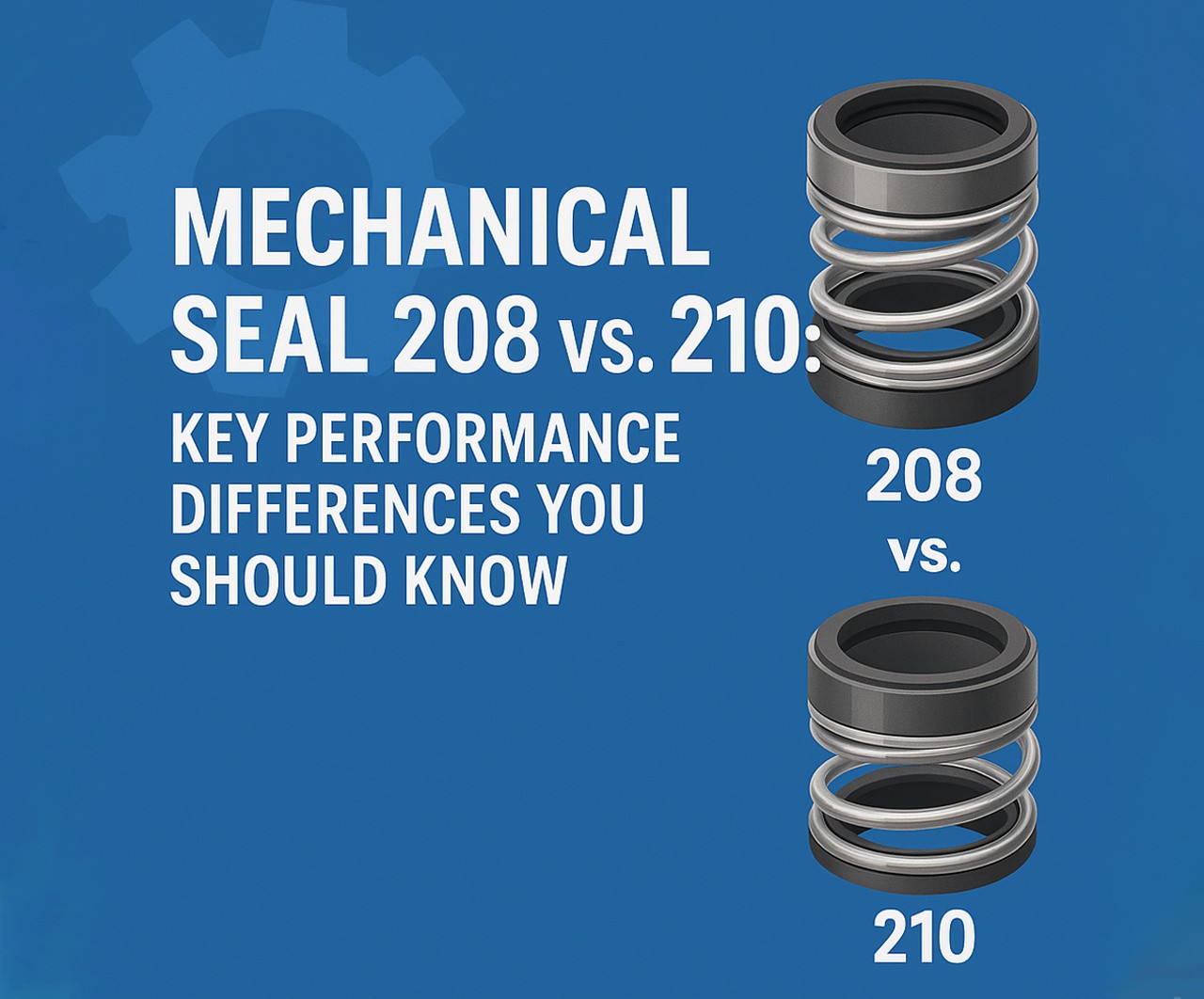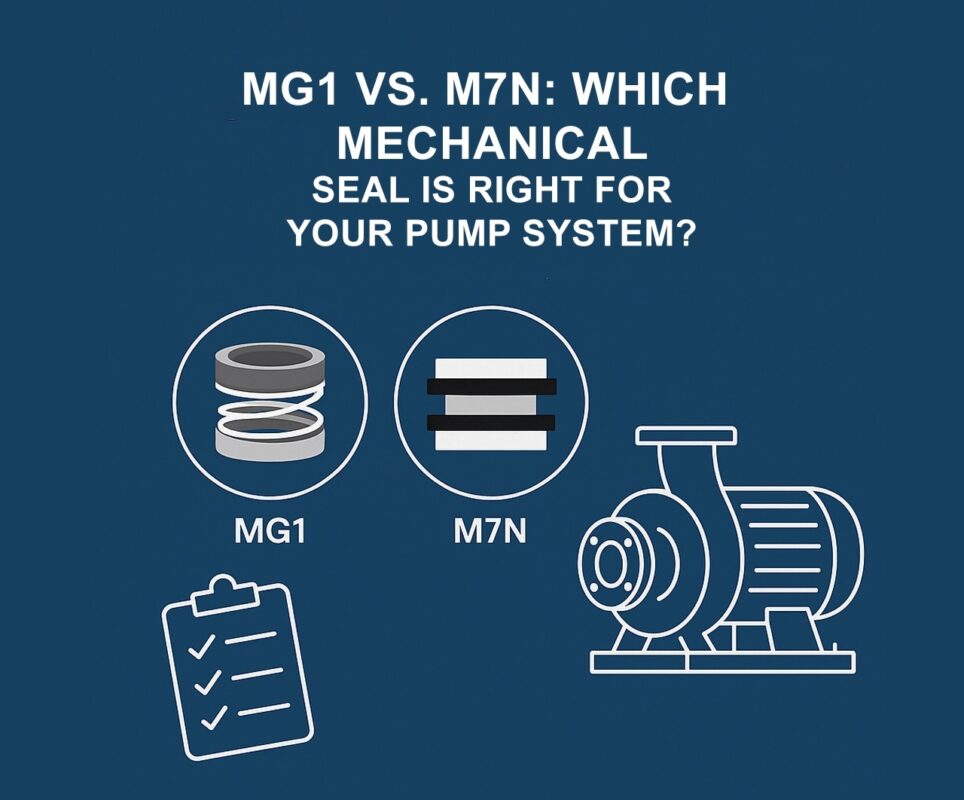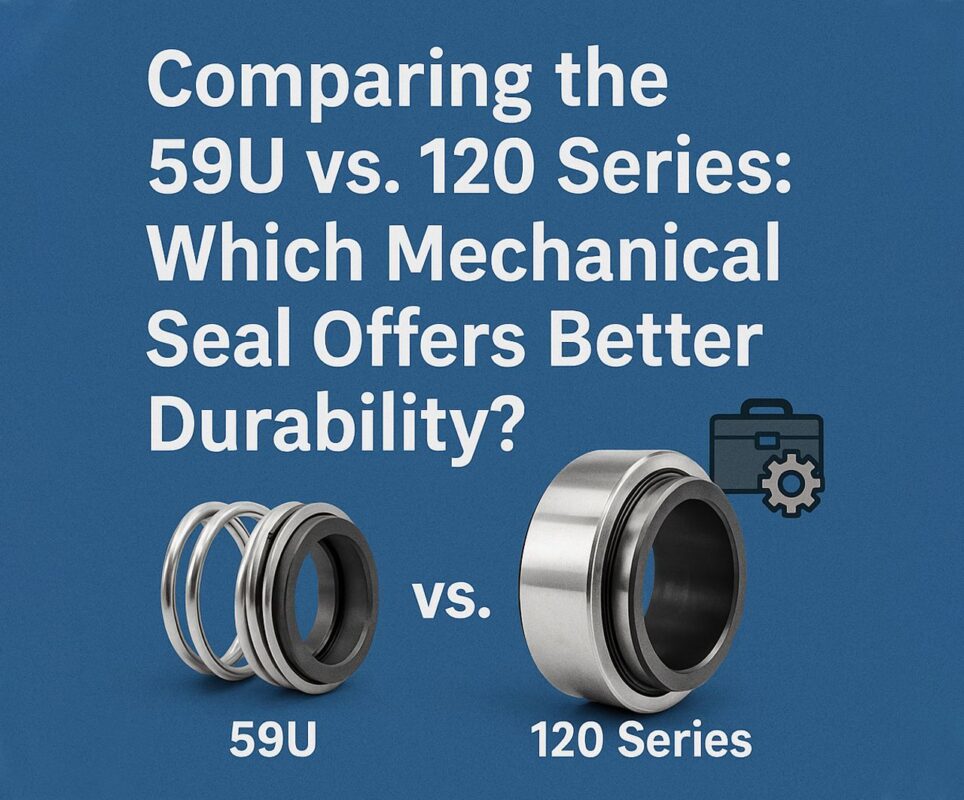When evaluating sealing solutions for rotating equipment, two names frequently come up in industrial maintenance circles: Mechanical Seal 208 and Mechanical Seal 210. Both are widely used in pumps, compressors, and mixers—but which is better for your application? If you’re sourcing options through a mechanical seal supplier, weighing specifications via mechanical seal engineering, or comparing your budget against the average mechanical seal price, this guide breaks down the critical differences that can make or break system performance.
From construction to material choices and application suitability, let’s dive into the essential distinctions between these two commonly used mechanical seal types. Know more..
Introduction to Mechanical Seals: Why Design Matters
Mechanical seals are the unsung heroes of fluid containment in rotating equipment. These precision-engineered components prevent leakage while allowing a shaft to rotate, forming a seal between the rotating and stationary components of pumps or similar equipment.
For engineers and buyers alike, choosing between the 208 and 210 mechanical seals isn’t just about part numbers—it’s about understanding how seal design affects uptime, performance, and maintenance costs.
That’s where working with a knowledgeable mechanical seal supplier becomes invaluable. Beyond just availability, they offer insight into application demands, compatibility, and total lifecycle value.
Mechanical Seal 208: Overview and Benefits
The Mechanical Seal 208 is known for its compact, single-spring, pusher-type design. It’s popular in light- to medium-duty applications and is favored for its ease of installation and cost-effectiveness.
Key Features:
- Unbalanced seal configuration
- Single coil spring
- Component seal style (as opposed to cartridge type)
- Often used in water pumps, general industry, and HVAC systems
Advantages:
- Lower mechanical seal price
- Ideal for clean fluid applications
- Simple and quick to install
- Wide availability from any mechanical seal supplier
Typical Materials:
- Seal faces: Carbon vs. Ceramic or Silicon Carbide
- Secondary seals: NBR, EPDM, or Viton
- Springs: Stainless steel
Mechanical seal engineering teams often recommend the 208 when system pressures are low and leakage risks are minimal.
Mechanical Seal 210: Overview and Performance
The Mechanical Seal 210 is a more robust, balanced seal that offers improved sealing efficiency and longevity. It’s often seen in more demanding industrial and process applications.
Key Features:
- Balanced design for higher pressure capacity
- More advanced face load distribution
- Designed to reduce heat and friction
- Better suited for viscous, abrasive, or corrosive fluids
Advantages:
- Longer seal life in harsh conditions
- Greater resistance to thermal shock
- Tighter tolerances and face stability
- Ideal for OEMs requiring durability over cost
While it has a higher mechanical seal price, the 210 provides better ROI in aggressive environments and extended service intervals.
Head-to-Head Comparison: 208 vs. 210
| Feature | Mechanical Seal 208 | Mechanical Seal 210 |
| Configuration | Unbalanced | Balanced |
| Pressure Rating | Up to 10 bar (approx.) | Up to 25+ bar |
| Fluid Compatibility | Clean, non-abrasive fluids | Viscous, abrasive, or chemically aggressive |
| Typical Applications | HVAC, water pumps, basic transfer pumps | Petrochemical, slurry, high-speed pumps |
| Mechanical Seal Price | Lower | Higher |
| Wear Life | Moderate | Long-term durability |
| Complexity | Simple | Advanced |
| Installation Ease | Very easy | Requires more alignment precision |
Application-Based Selection
When to Use the Mechanical Seal 208
- Municipal water systems
- Centrifugal pumps for clean liquids
- Cooling tower circulation
- Food-grade or non-toxic fluids (with proper material selection)
You’ll often see the 208 recommended by a mechanical seal supplier when budget and speed of installation are key decision factors.
When to Choose the Mechanical Seal 210
- Chemical processing plants
- Mining and slurry handling
- High-pressure/high-speed applications
- Marine and offshore pumps
Here, mechanical seal engineering guidance becomes critical—since the wrong seal face or elastomer selection can cause early failure even in a superior design.
Material Considerations
Regardless of seal type, selecting the right materials is vital.
For the 208:
- Ideal face pairing: Carbon vs. Ceramic
- Elastomers: NBR or EPDM (for water)
- Use in basic water pumps and light-duty industrial systems
For the 210:
- Face pairing: Silicon Carbide vs. Silicon Carbide or Tungsten Carbide vs. Carbon
- Elastomers: FKM (Viton) or PTFE for chemical resistance
- Better for hazardous or high-temperature service
This is where a mechanical seal supplier can help match seal specs with exact chemical and mechanical tolerances.
Cost vs. Performance: Understanding Mechanical Seal Price
While the mechanical seal price for a 208 is typically lower, don’t let that alone drive your decision. Seal failure can lead to:
- Downtime
- Fluid loss
- Equipment damage
- Safety hazards
The higher initial investment in a 210 often pays off in reduced maintenance frequency and extended system lifespan—especially in critical operations.
To evaluate total cost of ownership (TCO), factor in:
- Number of maintenance cycles per year
- Average lifespan per seal type
- Downtime cost per hour
Even mechanical seal engineering software tools now include TCO calculators to help quantify long-term savings.
Installation and Maintenance
Mechanical Seal 208:
- Simple alignment and easy fitment
- Fewer parts = faster turnaround
- Ideal for field service with minimal tools
Mechanical Seal 210:
- Requires proper alignment and preload settings
- Best installed by trained technicians
- Cartridge-style versions may be available for easier handling
OEMs often standardize on the 210 when maintenance intervals are long or system uptime is critical.
Sourcing Tips: What to Look for in a Mechanical Seal Supplier
Not all seal suppliers are equal. When sourcing either the 208 or 210 seal, look for a mechanical seal supplier that offers:
- Multiple material options
- CAD and spec sheet access
- Customization services
- Application support and engineering advice
- Competitive mechanical seal price structures
- Quick delivery and global logistics
Ideally, your supplier will also collaborate on mechanical seal engineering questions, helping optimize your seal selection, groove design, and installation protocols.
Future Trends in Mechanical Sealing
As industries push for smarter systems and lower emissions, the mechanical seal landscape is evolving.
Emerging trends include:
- Sensor-enabled seals that monitor temperature, wear, and vibration
- Environmentally friendly seals with reduced leakage/emissions
- Hybrid materials for better thermal and chemical resistance
- 3D-printed sealing components for rapid prototyping and short runs
The 208 and 210 models may soon feature upgraded coatings or smart tech integrations—making collaboration with an innovative mechanical seal supplier more important than ever.
Final Thoughts
Both the Mechanical Seal 208 and Mechanical Seal 210 have carved out important roles in the industrial world. The 208 remains a staple for general-purpose applications, where simplicity and cost efficiency are paramount. In contrast, the 210 offers next-level performance in more demanding environments—especially where pressure, speed, and fluid complexity require enhanced durability.
Choosing the right seal is about more than specs—it’s about knowing your system, your goals, and your limits. Whether you’re focused on cost, longevity, or process compatibility, working with a knowledgeable mechanical seal supplier and leaning into expert mechanical seal engineering insights ensures you make the best choice.
And when comparing mechanical seal price, remember—it’s not just what you pay upfront. It’s what you get back in reliability, uptime, and peace of mind.




